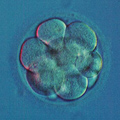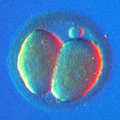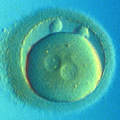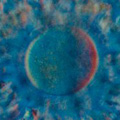Translocations Detection
 There are few PGD techniques for the detection of chromosomal translocations:
There are few PGD techniques for the detection of chromosomal translocations:
- Chromosome Conversion followed by whole chromosome painting
- FISH using subtelomeric probes
- CGH in its original form
- aCGH using 24-sure+ chips
- SNP Microarray with parental support technology
The drawbacks and limitations of WGA necessary for CGH or Microarray-based PGD become especially dangerous for the detection of translocations. Especially if the translocated segment is small, then its preferential amplification during WGA will result in an instant misdiagnosis.
The standard PGD technique for the detection of translocations was and remains FISH through the use of subtelomeric probes. In clinical cytogenetics, even when hundreds of chromosome metaphase plates are available for analysis, FISH is routinely used to confirm the initial diagnosis.
As with 5-chromosome FISH, we use techniques discovered during the development of our OGS-24 method to make our RGD results absolutely reliable. Translocation detection plus 24-chromosome aneuploidy testing is available for our clients in the Greater Los Angeles area.
Chromosome Conversion is a technique developed by us in 1999. This is the only PGD technique able to distinguish between completely normal embryos and the embryos with "balanced translocation" i.e. those like the parent. The Conversion technique is extremely complicated, and was used by us only until FISH subtelomeric probes became available. There are evident benefits in being able to select only "normal" versus "balanced" embryos for transfer. However, the truth is, translocation patients never have 40-60% of normal+balanced embryos promised by the textbooks. The reasons are still poorly understood, but the actual likelihood of having genetically normal embryo is 10-40%. As a result, during actual PGD cases "balanced" embryos have always been selected for transfer along with the "normal" ones.






